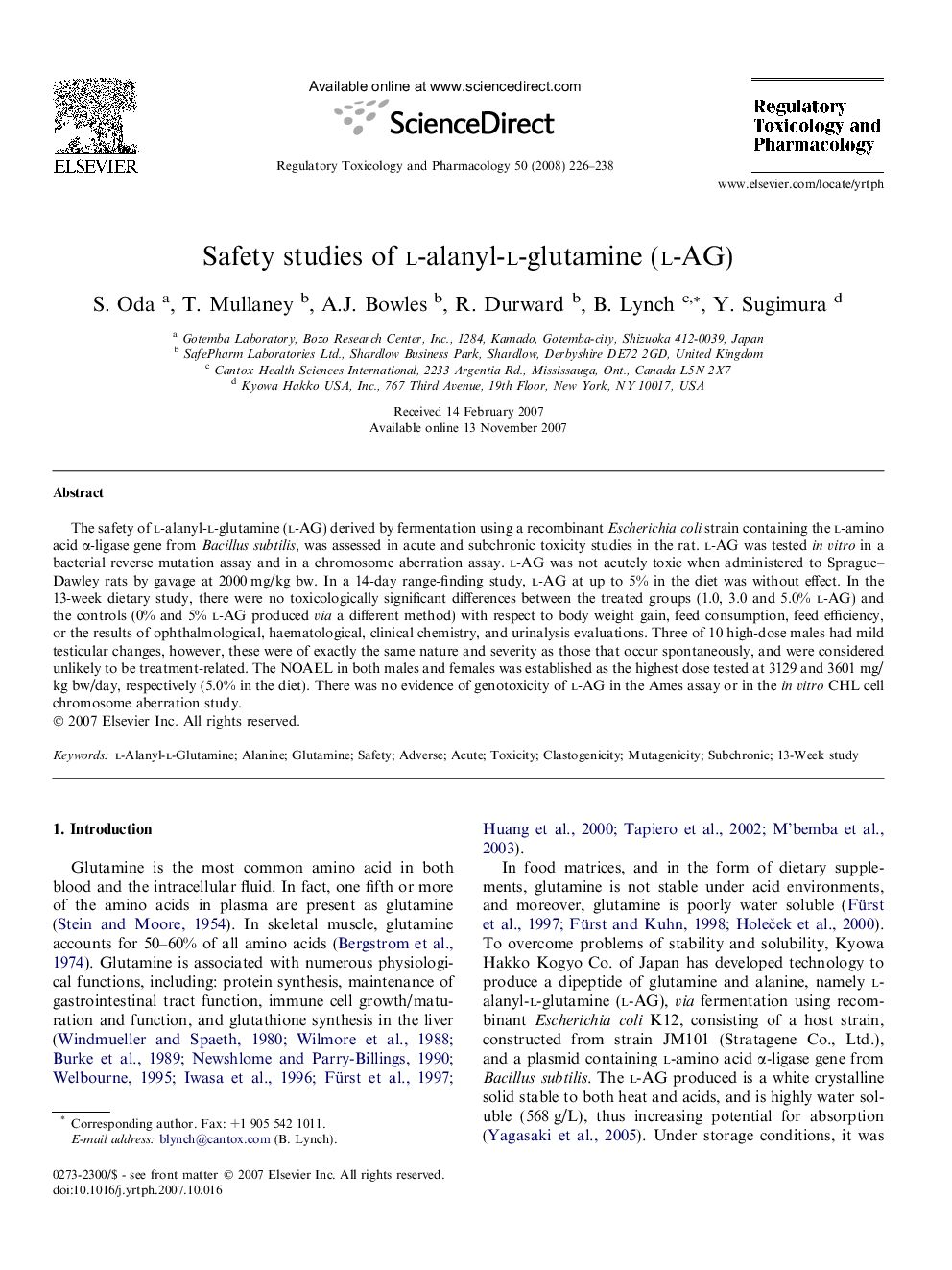| Article ID | Journal | Published Year | Pages | File Type |
|---|---|---|---|---|
| 2592943 | Regulatory Toxicology and Pharmacology | 2008 | 13 Pages |
The safety of l-alanyl-l-glutamine (l-AG) derived by fermentation using a recombinant Escherichia coli strain containing the l-amino acid α-ligase gene from Bacillus subtilis, was assessed in acute and subchronic toxicity studies in the rat. l-AG was tested in vitro in a bacterial reverse mutation assay and in a chromosome aberration assay. l-AG was not acutely toxic when administered to Sprague–Dawley rats by gavage at 2000 mg/kg bw. In a 14-day range-finding study, l-AG at up to 5% in the diet was without effect. In the 13-week dietary study, there were no toxicologically significant differences between the treated groups (1.0, 3.0 and 5.0% l-AG) and the controls (0% and 5% l-AG produced via a different method) with respect to body weight gain, feed consumption, feed efficiency, or the results of ophthalmological, haematological, clinical chemistry, and urinalysis evaluations. Three of 10 high-dose males had mild testicular changes, however, these were of exactly the same nature and severity as those that occur spontaneously, and were considered unlikely to be treatment-related. The NOAEL in both males and females was established as the highest dose tested at 3129 and 3601 mg/kg bw/day, respectively (5.0% in the diet). There was no evidence of genotoxicity of l-AG in the Ames assay or in the in vitro CHL cell chromosome aberration study.
